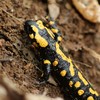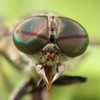Contact
I would greatly appreciate your feedback. Please also report any problems or errors on the website or in the simulation models.E-Mail: ksteiner@vinckensteiner.com
Postal address:
Klaus F. Steiner
Krottendorfer Straße 70, 8052 Graz, Austria
About me
For many years, I have been absorbed with the question of how evolution has produced altruistic traits. The common explanations, especially those involving kin selection and selfish genes, never seemed sufficiently coherent to me in many cases. Even the standard example of haplodiploidy in hymenoptera is not conclusive when one considers that several fathers are involved in a honey bee queen's breeding, meaning that the daughters are not as closely related as previously assumed. But above all, research is finding more and more examples of altruistic behavior among non-relatives.
There must be something more fundamental behind this altruism that is so widespread in biology. I am now convinced that the dynamics of structured populations is the primary cause for the evolution of altruism, based on simple mathematical calculations. The various simulation models presented on this website are intended to demonstrate this.

However, my interest in the fundamental questions of biology and evolution has remained. Above all, I am fascinated by the antagonisms and conflicts between individuality and collective behavior, even beyond biology.
I also maintain the website Vinckensteiner Rätsel und Denkspiele with puzzles and brain teasers (mainly in German, but with portions in English and Spanish) and the evolution page for kids Evolution in Aktion (in German).
Publications
Steiner, K.F., 2024. Altruism pays off in group-structured populations through probable reciprocity. bioRxiv 2024.01.20.575560. doi: https://doi.org/10.1101/2024.01.20.575560Steiner, K.F., 2021. The Good, the Bad and the Stochastic: How Living in Groups Innately Supports Cooperation. bioRxiv 2021.02.21.431661; doi: https://doi.org/10.1101/2021.02.21.431661
Hartbauer, M., Kratzer, S., Steiner, K., Römer, H. Mechanisms for synchrony and alternation in song interactions of the bushcricket Mecopoda elongata (Tettigoniidae: Orthoptera). J Comp Physiol A 191, 175–188 (2005). doi: https://doi.org/10.1007/s00359-004-0586-4





